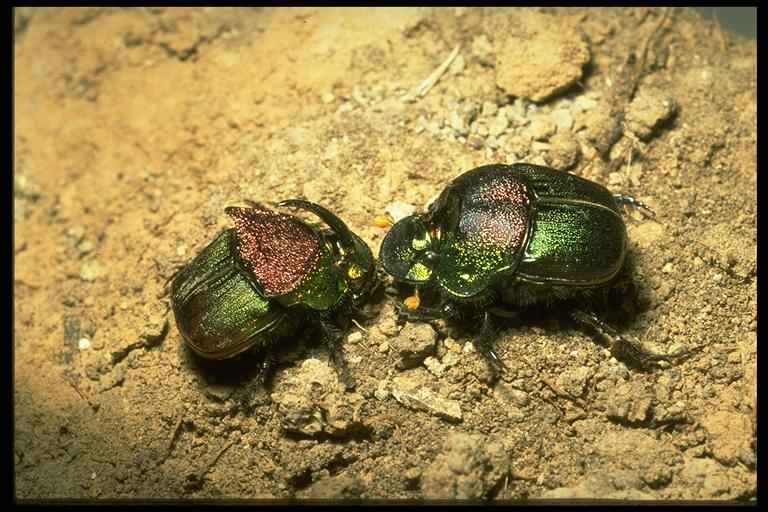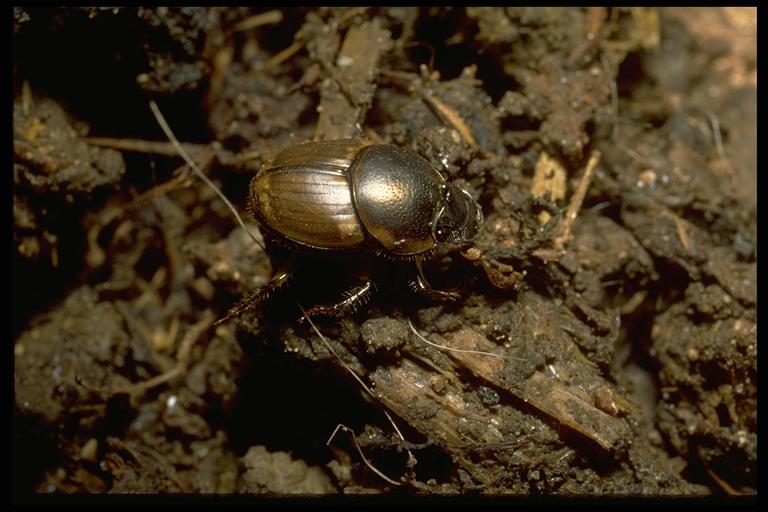
“Rainbow scarab”, a dung beetle, Phanaeus vindex MacLachlan (Coleoptera: Scarabeidae), male (horned) and female. Photo by Drees.
Common Name: Dung beetle
Scientific Name: Phanaeus vindex MacLachlan; Onthophagus gazella Fabricius
Order: Coleoptera
Description: Males and female beetles are between ½ and 1 inch long and overall metallic blue-green and copper. The front of the head is flattened and golden bronze. The male has a long, curved horn extending from the front of the head (clypeus) while the slightly larger female has a tubercle. The front legs are modified for digging.
There are a number of dung beetles or “tumblebugs” in the subfamily Scarabaeinae (Canthon, Copris, Deltochilum and Dichotomus and other genera) that are important in recycling animal feces. Some are small, dark dung-feeding scarab species (e.g., Ataenius and Aphodius species). One species, Onthophagus gazella Fabricius, was introduced by USDA scientists in the 1970’s and is now common throughout the state. In parts of Texas, they remove 80 percent of the cattle droppings. Most species are dull to shiny black and 1-3/8 inch or less in length with wing covers (elytra) that may have ridges (striae). They are often attracted to lights at night. These beetles are related to the sacred scarab of ancient Egypt, Scarabaeus sacer Linnaeus.
Life Cycle: Adult male and females, working in pairs, dig deep burrows underneath animal excrement in which they bury portions of the droppings. Eggs, deposited in the excrement, hatch and C-shaped grubs (larvae) feed on the dung. The grubs develop through several stages (instars) before pupating within cells in the remains of the excrement.
Habitat and Food Source(s): Mouthparts are for chewing. Larvae feed on animal excrement buried by the adults. These beetles are rarely encountered unless an effort is made to examine fresh potential larval habitats! Animal excrement is rich in insect fauna and can yield these strikingly beautiful beetles. Beetles can be washed to remove debris.

Introduced dung beetle, Onthophagus gazella Fabricius (Coleoptera: Scarabeidae). Photo by Drees.
Pest Status: This species, along with other dung beetles, plays an important role in nature: reducing fecal material in nature and thereby reducing the habitat for filth-breeding flies; considered beneficial and medically harmless.
Management: None, they are considered a beneficial insect.
For additional information, contact your local Texas A&M AgriLife Extension Service agent or search for other state Extension offices.
Literature: Borror et al. 1989. Swan & Papp 1972.